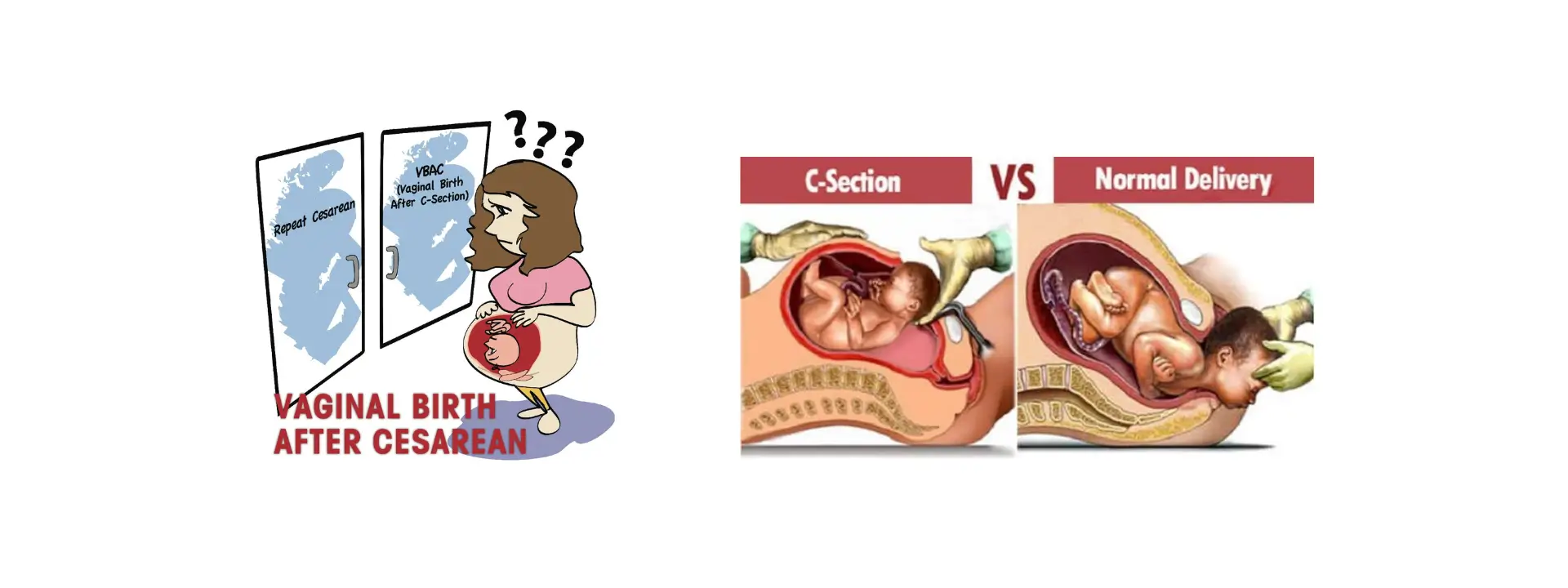Special Advice on Normal Deliveries after Cesarean Sections and Pain Relief during Labor.



Special Advice on Normal Deliveries after Cesarean Sections and Pain Relief during Labor.
Considering a normal delivery after a Cesarean section? RoyalDocline Clinic offers specialized guidance. Our OBGYN expert provides personalized advice, ensuring a safe and informed choice. Experience compassionate care and explore pain relief options during labor. Trust RoyalDocline for a holistic approach to your birthing journey. Schedule your consultation today!
Normal Deliveries After Cesarean Sections (VBAC – Vaginal Birth After Cesarean):
Consultation with Healthcare Provider:
- Discuss the possibility of VBAC with RoyalDocline. Not all women are suitable candidates, and various factors, such as the reason for the previous cesarean section, will be considered.
Risk Assessment:
- RoyalDocline will assess the risks and benefits of VBAC based on your medical history and the circumstances surrounding the previous cesarean section.
Monitoring During Labor:
- Continuous monitoring of the baby’s heart rate and maternal vital signs may be necessary to ensure the well-being of both mother and baby.
Labor Progression:
- Patience is key. VBACs may take longer than a planned cesarean section, and the labor process needs to progress safely.
Immediate Access to Emergency Care:
- Choose a birthing facility with immediate access to emergency services in case of unforeseen complications.
Informed Decision-Making:
- Be well-informed about the benefits and risks, and actively participate in the decision-making process with your healthcare provider.
Pain Relief During Labor:
Epidural Analgesia:
- Epidurals are a common and effective method of pain relief during labor. They provide continuous pain relief while allowing you to remain alert.
Intravenous (IV) Medications:
- Pain medications can be administered through an IV, offering relief, but they may cause drowsiness.
Breathing Techniques and Relaxation:
- Lamaze and other breathing techniques, along with relaxation exercises, can help manage pain and stress during labor.
Hydrotherapy:
- Immersing yourself in a warm bath or shower can provide comfort and pain relief during contractions.
Movement and Position Changes:
- Changing positions, walking, or rocking can help ease discomfort and encourage labor progression.
Continuous Support:
- Having a supportive birthing partner, doula, or midwife can make a significant difference in managing pain and providing emotional support.
Hypnobirthing:
- Some women find hypnobirthing techniques helpful for managing pain and promoting relaxation during labor.
Acupressure and Massage:
- Gentle massage and acupressure on specific points may provide relief during contractions.
TENS (Transcutaneous Electrical Nerve Stimulation):
- TENS devices deliver mild electrical impulses to nerve pathways, which can help alleviate pain.
Educational Classes:
- Consider attending childbirth education classes to learn about various pain relief options and coping strategies.
It’s crucial to have open communication with RoyalDocline about your preferences for pain relief and the possibility of a VBAC. Every woman’s pain tolerance and birthing experience are unique, so explore different options and create a birthing plan that aligns with your values and comfort level.

Related Services

Recurrent Fet...
Discover exemplary care for Recurrent Fe...

Infertility Evalu...
At RoyalDocline, our expertise is dedicated to as...

Recurrent Mis...
Experience specialized care for Recurrent Mi...


